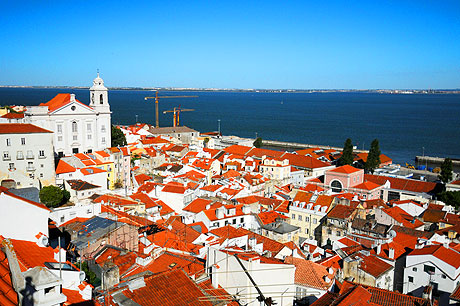Alfama
Alfama ( [ aɫ'fɐmɐ ] ) is a neighborhood and a former Freguesia in the Portuguese capital Lisbon between the Castelo de São Jorge and the Tejoufer. Alfama, which is located in today's Santa Maria Maior Freguesias and São Vicente is known for its many attractions like the Panteão Nacional and the Castelo de São Jorge, as well as numerous restaurants and Fadolokalen. The name probably comes from the Arabic Al- hamma, the " sources " or " baths" means something.
At the time of Moorish domination, Alfama constituted the heart of Lisbon, which only gradually expanded into the west to today's " Baixa ". The fact that the richer layers also followed the trend and moved towards the west to Belem, Algés, Estoril and Cascais, remained primarily fishermen and poorer sections in Alfama. Alfama, in contrast to the Lisbon city center at the great Lisbon earthquake of 1755 hardly damages, so the labyrinth of narrow streets and alleys is preserved. Due to the intended attack house renovations after the end of the Portuguese dictatorship in 1974 and the strong influx of dining options the tourist importance Alfama grew considerably.
About Alfama perched ever- present the Castelo de São Jorge, resided in until the 16th century, the Portuguese king. To picturesque views of the Tagus River and the other parts of the city have at various points in Alfama, they are called Miradouros. Near the miradouro de Santa Luzia is located in a mansion from the 17th century, the Museu de Decorative Arts ( " Museum of Decorative Arts "). Also located in Alfama, the Sé, Lisbon seat of the Patriarchate of Lisbon and the oldest church in the 12th century, and the Convento da Graça from the 18th century, the extensive Monastery of São Vicente de Fora from the late 16th century, in the kings of the House of Braganza are buried, as well as the Igreja de Santa Engrácia from the 17th century, the ( " Panteão Nacional " ) is used for the famous Portuguese today as a national Pantheon.




_2.jpg)



